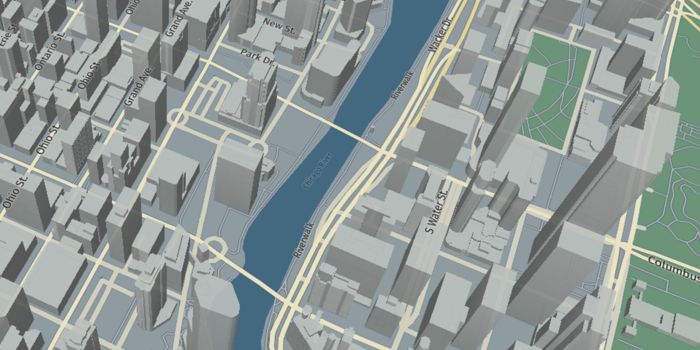AWS Public Sector Blog
Category: Aerospace & Satellite
AWS launching new Region in UAE in 2022
The new AWS Region in the Middle East brings new infrastructure to the United Arab Emirates (UAE) and will consist of three Availability Zones, giving local customers more choice and flexibility to leverage advanced cloud technologies. Learn more about how organizations in the UAE public sector are already innovating with AWS at home and in space.
Pushing boundaries to achieve innovative breakthroughs: Key takeaways from the AWS Public Sector Summit Online 2021 keynote
Organizations across the public sector are leveraging the cloud to drive their missions forward with cutting-edge innovation. At the Amazon Web Services (AWS) Public Sector Summit Online, vice president of worldwide public sector and industries Teresa Carlson and vice president of worldwide public sector Max Peterson at AWS shared the latest updates and spoke with leaders who are reinventing what’s possible using the AWS Cloud. Here’s what you missed.
Celebrating 40 years of space exploration
Space exploration has advanced significantly over the past 40 years. With missions like the space shuttle, NASA has led the way, demonstrating for the world their ability to push the boundaries of technological innovation to explore space, collect data, and enable scientific knowledge to make the world a better place. We are now in an exciting and daring new age as more organizations around the world are looking to explore space and achieve a sustainable operating presence. And fulfilling space-based missions demands innovation. Learn how AWS is supporting customers globally to push the boundaries of space exploration.
Inspired by our customers’ mission outcomes
I recently had the opportunity to record the keynote for this year’s AWS Public Sector Summit Online. This year’s keynote theme is “Inspiration Everywhere,” and I can’t wait to share a number of inspiring stories and examples from our customers with you when the keynote airs on April 15. What unites all of the stories is a commitment to achieving mission outcomes with AWS and cloud computing. And while we’ll spend some time talking about the technology, I’ll also share with you the organizational changes that mission owners can drive, today, to move fast, be responsive, and maximize the impact of limited resources.
Announcing the AWS Space Accelerator for startups
As the global aerospace and satellite industry enters a new age, leveraging the power of startups will drive innovation and improve accessibility to space data. AWS understands the importance of creating and nurturing startup communities, and today, we are proud to announce the launch of the AWS Space Accelerator. The AWS Space Accelerator is a four-week business support program that is open to space startups seeking to use AWS to help solve the biggest challenges in the space industry. Applications are open today and proposals are due by April 21, 2021.
Perseverance lands on Mars, cloud-ready to explore
AWS is helping NASA JPL reach an inaugural and innovative milestone in deep space exploration. On Thursday, February 18, NASA’s Mars Perseverance rover landed on Mars, after its 7-month, 300-million-mile journey from Earth. This is the first planetary NASA mission, with mission-critical communication and transfer of telemetry data in the cloud. During Perseverance’s mission on Mars, the science and engineering data will be processed and hosted in AWS, enabling the Mars 2020 mission to benefit from the scalability, agility, and reliability of the cloud.
UAE Mars mission uses AWS to advance scientific discoveries
On February 9, a new object successfully began to orbit Mars: an uncrewed spacecraft called the Hope Probe. The mission has already returned the first image of Mars, taken by Hope’s Emirates eXploration Imager from an altitude of 24,700 km. Led by the Mohammed Bin Rashid Space Centre (MBRSC), the Hope Probe is the first interplanetary mission for the United Arab Emirates, the fifth country in history to reach the red planet. It will also be the first spacecraft to capture a complete picture of the Martian atmosphere and its layers during different times of the day and different seasons for one complete Martian year. Once data transmitted by the Hope Probe reaches the scientific teams on Earth, MBRSC will use AWS advanced technologies to process and analyze the vast amounts of data and imagery to help researchers better understand the Martian atmosphere and its layers.
The value of partner integration: Esri, HERE Technologies, and Amazon Location Service
At re:Invent 2020, AWS announced the release of Amazon Location Service in preview. The fully managed service helps developers add location data to their applications while maintaining data security and user privacy. Amazon Location Service integrates data sources and services from AWS Partners Esri and HERE. AWS built Amazon Location Service to help users access high-quality global data from these longtime, trusted, geospatial location data providers.
5 things we’ve learned this year in the cloud for the public sector
This year, global health and economy challenged government, education, nonprofit, and health organizations to rethink operations. With a focus on their mission, organizations quickly shifted to better and more quickly serve their constituents, students, and customers. Many took advantage of ways to innovate and consider adopting the cloud. AWS looked for ways to help these organizations, educating them on the power of the cloud—no matter where they were on their cloud journey—as well as sharing inspiring stories from their peers. Here’s what we learned.
Mohammed Bin Rashid Space Centre uses AWS Ground Station to support UAE and global industry development
When wildfires broke out across northern and central California in August, a remote-sensing Earth observation satellite watched 381 miles (613 kilometers) above the planet’s surface. Built entirely in the United Arab Emirates (UAE) for the Mohammed Bin Rashid Space Centre (MBRSC), KhalifaSat captured imagery that could help governmental agencies and first responders monitor and assess the impact of the destructive blazes. To help KhalifaSat maintain continual coverage, MBRSC uses cloud services from AWS including AWS Ground Station.









